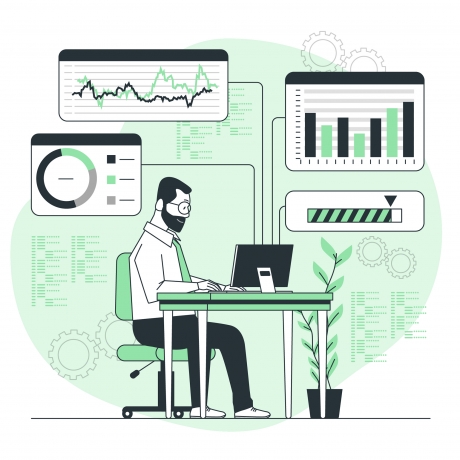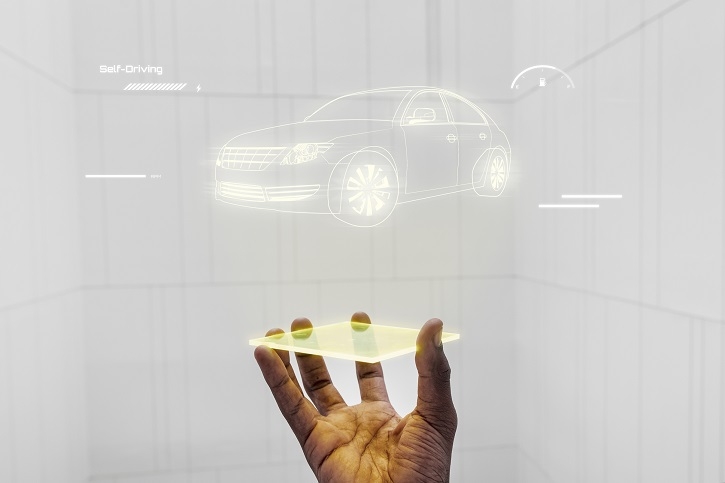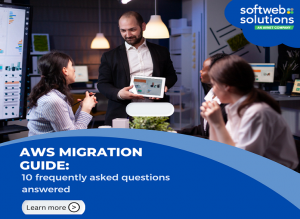Introduction to Data Annotation in Geospatial Data
In the rapidly evolving world of technology, data is the new currency. But just like raw minerals need refining to unlock their true value, geospatial data from satellites and drones requires meticulous attention through data annotation services. This process transforms vast amounts of imagery into actionable insights that can drive decision-making across various sectors—from agriculture to urban planning.
With an ever-growing demand for high-quality aerial imagery, understanding how we annotate this information has never been more crucial. The intricate details captured by satellites and drones hold immense potential; they offer a bird's-eye view of our planet while revealing patterns and insights that can inform everything from climate change strategies to infrastructure development. Let's explore the fascinating realm of geospatial data annotation and uncover its significance in transforming satellite and drone images into valuable resources for analysis!
Types of Geospatial Data
Geospatial data comes in various forms, each serving unique purposes. At its core, we have vector data. This type represents geographic features using points, lines, and polygons. It's perfect for mapping roads or boundaries.
Then there's raster data, which consists of pixelated images like satellite photos or aerial imagery. Each pixel contains information about the geographical area it covers.
Another interesting category is temporal data, capturing changes over time. Think of monitoring urban expansion through periodic satellite snapshots.
There's 3D geospatial data that provides depth perception alongside spatial dimensions. It's crucial for applications in urban planning and environmental studies.
Each type plays a vital role in how we analyze and interpret the world's geography effectively.
Importance of Data Annotation in Satellite and Drone Imagery
Data annotation plays a crucial role in the realm of satellite and drone imagery. It transforms raw visual data into meaningful insights that can drive decision-making across multiple sectors.
Accurate annotations enhance object recognition, enabling algorithms to identify features such as buildings, roads, and vegetation accurately. This is vital for urban planning and environmental monitoring.
Additionally, annotated images support machine learning models by providing the necessary training data. The more precise the annotations, the better these models perform in real-world applications.
As industries lean heavily on geospatial analysis, having well-annotated datasets becomes non-negotiable. They allow researchers and organizations to glean valuable information quickly without sifting through mountains of unprocessed data.
Effective data annotation paves the way for innovations in agriculture, disaster management, and even climate change studies—unlocking new possibilities from aerial perspectives.
Techniques for Data Annotation in Geospatial Data
Data annotation in geospatial data employs various techniques tailored to enhance the accuracy of satellite and drone imagery interpretation. One widely used method is polygonal annotation, which involves defining specific areas on a map by creating polygons around objects of interest.
Another effective technique is raster labeling. This approach works well for pixel-based classifications, allowing annotators to assign labels directly to pixels or groups of pixels within an image. It's particularly useful for identifying land cover types or detecting changes over time.
Point cloud annotation stands out when dealing with 3D data from LiDAR sensors. By marking individual points, it's possible to extract detailed information about terrain and structures.
Semantic segmentation offers another dimension by classifying each pixel into predefined categories. This granular analysis enables machines to understand complex scenes more effectively, paving the way for advanced applications in urban planning and environmental monitoring.
Tools and Software for Data Annotation in Satellite and Drone Imagery
- Choosing the right tools for data annotation in satellite and drone imagery is crucial. Many platforms offer specialized features to enhance accuracy and efficiency.
- One popular option is Labelbox, which provides an intuitive interface tailored for geospatial data. It allows users to annotate images seamlessly while collaborating with teams in real-time.
- Another noteworthy tool is GeoAnnotate, designed specifically for geospatial applications. Its focus on integrating geographic information systems (GIS) makes it a favorite among professionals handling complex datasets.
- Supervisely also deserves mention, as it combines machine learning capabilities with user-friendly annotation processes, enabling quick adjustments based on project requirements.
- These software solutions not only streamline workflows but also improve the quality of annotations significantly. With various options available, finding the perfect fit can elevate your data annotation company services dramatically.
Challenges and Solutions for Data Annotation in Geospatial Data
Data annotation in geospatial data faces several challenges. One major issue is the vast amount of imagery collected from satellites and drones. Processing this volume can be overwhelming.
Another challenge lies in the complexity of accurately labeling diverse geographical features. Different terrains require unique approaches, making consistency difficult to achieve.
Quality control also raises concerns. Ensuring that annotated data meets high standards demands meticulous oversight and expertise.
To address these problems, leveraging advanced machine learning algorithms can enhance efficiency. These tools automate parts of the annotation process, reducing human error while speeding up workflows.
Collaboration with skilled annotators is essential too. A blend of technology and human insight often leads to more accurate results.
Investing in robust training programs for annotators improves their proficiency over time, ensuring reliability across projects without compromising quality.
Impact of Accurate Data Annotation on Geospatial Analysis
Accurate data annotation is crucial for effective geospatial analysis. It enhances the clarity and utility of satellite and drone imagery, enabling researchers to extract meaningful insights.
When annotations are precise, they significantly improve machine learning model performance. This leads to better predictions regarding land use, environmental changes, and urban planning.
Moreover, accurate annotations facilitate collaboration among professionals in diverse fields. Geographers can work alongside urban planners and environmental scientists more effectively when utilizing well-annotated datasets.
Timely decisions depend on the reliability of data interpretation. With high-quality annotations, organizations can respond swiftly to crises or implement sustainable practices with confidence.
Investing in robust annotation processes ultimately drives innovation across sectors reliant on geospatial data. The potential applications are vast—from disaster management to agricultural optimization—making meticulous data preparation essential for success.
Future Developments in Data Annotation for Satellite and Drone Image
- The future of data annotation for satellite and drone imagery is filled with potential. As technology progresses, we can expect more sophisticated methods and tools to emerge. Machine learning algorithms are becoming increasingly adept at handling large volumes of geospatial data. This will streamline the annotation process, making it faster and more accurate.
- Moreover, automation in data annotation services is likely to gain traction. AI-powered solutions could take over repetitive tasks while human annotators focus on complex scenarios that require expert judgment. The integration of augmented reality (AR) could also enhance how we visualize annotated data, providing a richer context for analysis.
- As industries evolve—taking advantage of remote sensing technologies—the need for precise annotations will only grow. Enhanced collaboration between tech companies and researchers may lead to innovative applications that transform urban planning, agriculture, disaster response, and environmental monitoring.
- Staying ahead in this field means embracing new methodologies as they arise. Organizations should be prepared to adapt quickly if they want their projects to thrive in an increasingly competitive landscape marked by rapid technological advancements in geospatial analytics.






